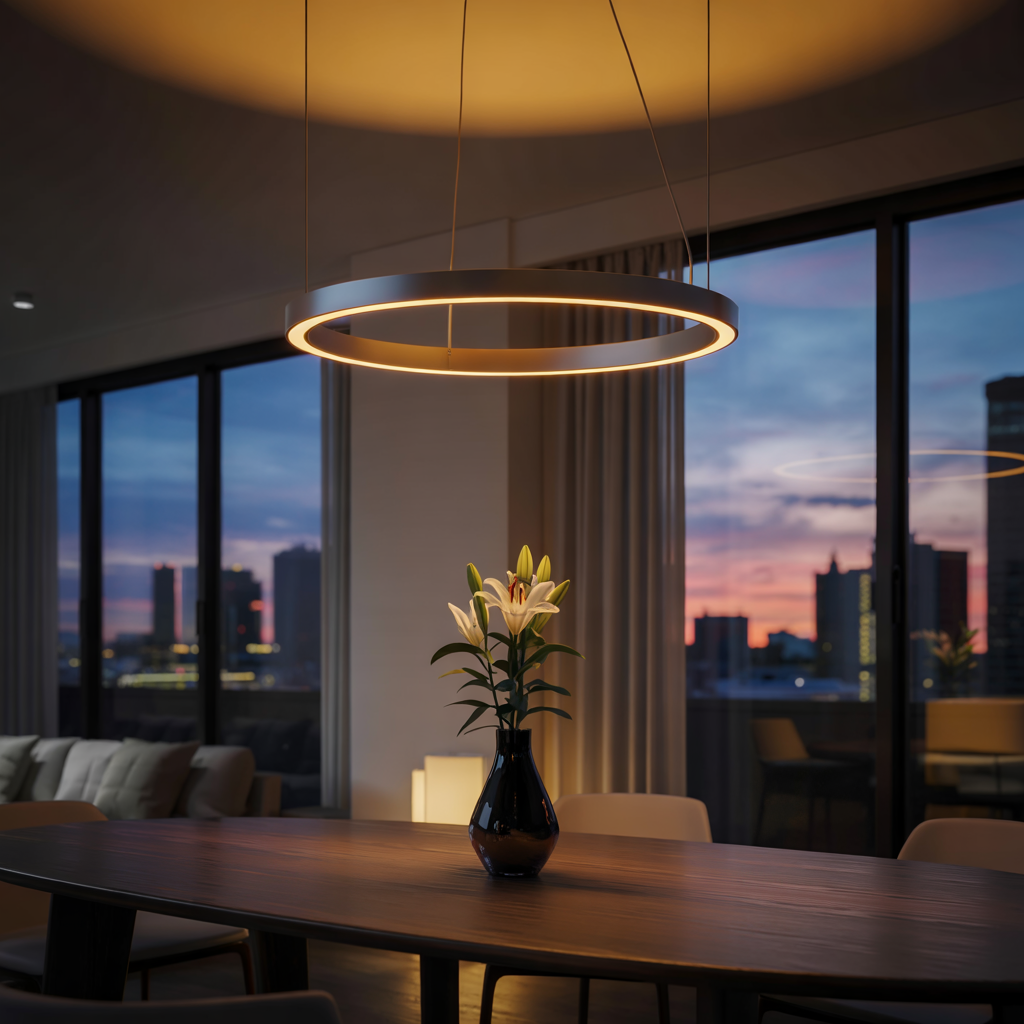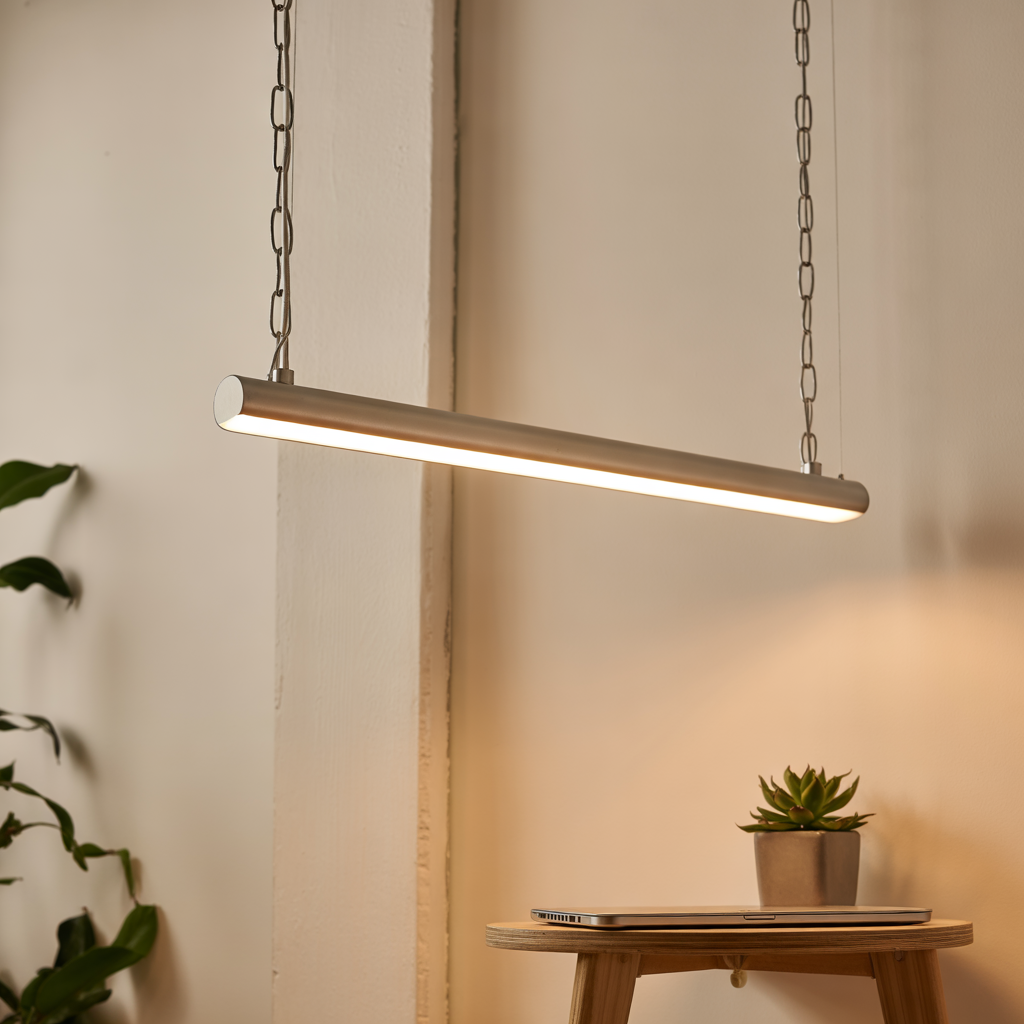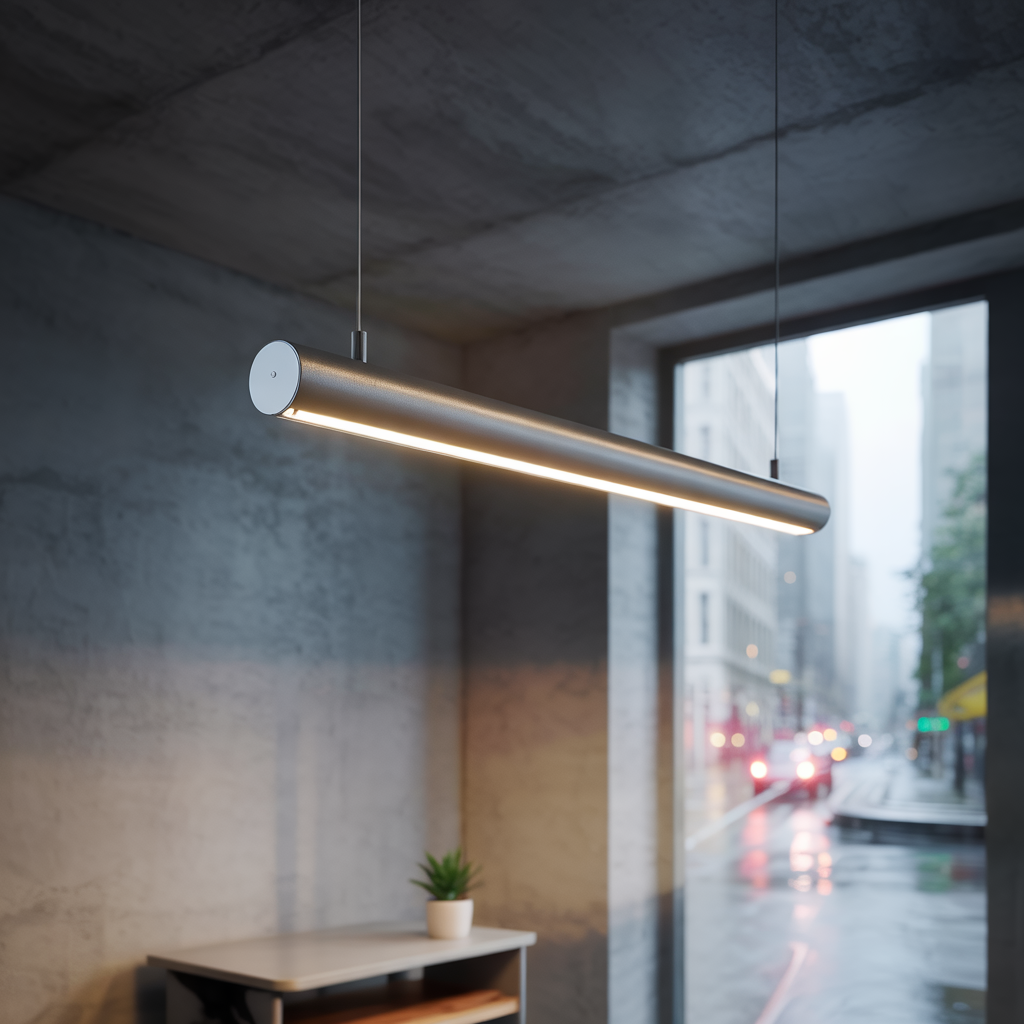Are LED Lights Dimmable?: The Dimmable Dilemma
Are LED lights dimmable? Yes, many LED lights are dimmable, but not all. To ensure compatibility, use LED bulbs labeled “dimmable” and pair them with an LED-compatible dimmer switch. Using a non-compatible dimmer can cause flickering or buzzing. Always check both bulb and dimmer specifications before installation. LEDs, or light-emitting diodes, are semiconductor devices that…
Are LED lights dimmable? Yes, many LED lights are dimmable, but not all. To ensure compatibility, use LED bulbs labeled “dimmable” and pair them with an LED-compatible dimmer switch. Using a non-compatible dimmer can cause flickering or buzzing. Always check both bulb and dimmer specifications before installation.
LEDs, or light-emitting diodes, are semiconductor devices that produce light when an electric current passes through them. Unlike incandescent bulbs that generate light through heat, LEDs produce light directly, making them significantly more energy-efficient. This efficiency is a key factor in their dimmability.
LEDs require a specific voltage and current to operate optimally. Dimming an LED involves reducing the current flowing through it, thus lowering the light output. However, simply reducing the voltage isn’t always sufficient and can lead to flickering or damage. The process needs careful management.
Are LED lights dimmable?
The official answer is yes. Here, you will discover different types of light which are dimmable and you can choose any of them.
Types of LED Bulbs and Their Dimmability

Standard LED Bulbs: Dimmable or Non-Dimmable?
| Feature | Dimmable LED Lights | Non-Dimmable LED Lights |
|---|---|---|
| Brightness Control | Adjustable with compatible dimmer switches | Fixed brightness only |
| Application | Ideal for mood lighting and flexibility | Suitable for basic lighting needs |
| Compatibility | Requires LED-compatible dimmer | Works with standard on/off switches |
| Cost | Typically more expensive | Usually less expensive |
| Energy Efficiency | Energy-efficient with variable use | Energy-efficient at full output only |
| Lifespan | Long-lasting if properly dimmed | Long-lasting with stable voltage |
| Installation | May need dimmer upgrade | Plug-and-play simplicity |
Not all LED bulbs are created equal. Many standard LED bulbs are specifically designed for dimmable applications, clearly labeled as such on their packaging. Non-dimmable LEDs, however, will likely flicker or fail if used with a dimmer switch. Always check the packaging!
Read More: Do LED lights cause cancer? Separating Fact From Fiction
Smart LED Bulbs and Dimming
Smart LED bulbs offer a wide range of features, including app-controlled dimming. These bulbs communicate wirelessly with a hub or smartphone, allowing for precise dimming control, often surpassing the capabilities of traditional dimmer switches.
LED Strip Lights and Dimming
LED strip lights also vary in their dimmability. Some are designed for use with specific dimmers or controllers, while others might be integrated with their own dimming circuitry. Check the manufacturer’s specifications.
Dimmable LED Bulbs: Key Features and Benefits

Energy Efficiency and Cost Savings
Dimmable LEDs are exceptionally energy-efficient, consuming less power than incandescent or halogen bulbs. Dimming them further reduces energy consumption, leading to significant cost savings on your electricity bill.
Mood Lighting and Atmosphere
Dimmable LEDs allow you to adjust the light intensity to create the perfect ambiance for any occasion – from bright and cheerful to soft and relaxing. This fine-grained control transforms the mood of a room.
Extended Lifespan
High-quality dimmable LEDs boast an exceptionally long lifespan, often lasting significantly longer than other lighting technologies, minimizing replacement costs and reducing waste.
Compatibility with Smart Home Systems
Many dimmable LEDs are compatible with popular smart home systems, like Philips Hue or Google Home, offering seamless integration into your automated lighting setup. This allows voice control and scheduling of dimming.
Read More: The Dawn Of LED Lighting: When Were LED Lights Invented?
Factors Affecting LED Dimmability
The Importance of Compatible Dimmer Switches
Not all dimmer switches are compatible with all LED bulbs. Using an incompatible dimmer can lead to flickering, buzzing, or even damage to the LED bulb or dimmer itself. Always check the dimmer switch’s specifications for compatibility. Leading brands often provide compatibility lists on their websites.
Minimum Load Requirements of Dimmer Switches
Dimmer switches often have a minimum wattage requirement. If you’re using low-wattage LED bulbs, you might need a dimmer switch specifically designed for low-wattage loads to avoid issues.
Load Capacity of Dimmer Switches
Dimmer switches also have a maximum load capacity. If you exceed this limit by connecting too many LED bulbs, the dimmer could overheat and malfunction.
Forward Phase vs. Reverse Phase Dimmers
Some dimmer switches are designed for leading-edge dimming (forward phase), while others are for trailing-edge dimming (reverse phase). The type of dimmer must match the type of LED bulb for optimal performance. This technicality is often overlooked.
Read More: 15 Beautiful Romantic Bedroom Lighting Ideas to Set the Mood
Choosing the Right Dimmable LED Bulbs

Checking for Dimmability Labels
Always check the packaging for clear indications of dimmability. Look for statements like “dimmable,” “compatible with most dimmers,” or specific dimmer switch brand recommendations.
Reading Manufacturer Specifications
Consult the manufacturer’s specifications to verify compatibility with your existing dimmer switch or to identify suitable dimmer switch options. Pay attention to wattage and voltage requirements.
Understanding Color Rendering Index (CRI)
CRI measures how accurately a light source renders the colors of objects. Higher CRI values (closer to 100) indicate more natural color rendering. This is not directly related to dimmability, but crucial for overall lighting quality.
Considering Color Temperature
Color temperature is measured in Kelvin (K). Lower Kelvin values (e.g., 2700K) indicate warmer, yellowish light, while higher values (e.g., 5000K) represent cooler, bluer light. Choose the color temperature that best suits your space and preferences. This does not impact dimmability, but the perceived light quality when dimmed.
Installing Dimmable LED Lights
Safety Precautions: Powering Off Before Installation
Always turn off the power at the circuit breaker before installing or replacing any light bulbs or dimmer switches. This prevents electrical shocks and damage.
Wiring and Connection
Ensure correct wiring when installing dimmer switches. Consult an electrician if you are unsure about the wiring process. Incorrect wiring can lead to malfunctions and safety hazards.
Testing and Troubleshooting
After installation, test the lights and dimmer switch functionality. Check for flickering, buzzing, or any unusual behavior. Address any problems promptly. If you’re still facing issues, review the compatibility information for both the bulb and the dimmer.
Troubleshooting Common Dimming Problems
Flickering LED Lights
Flickering can result from incompatible dimmer switches, low minimum loads, exceeding the maximum load, or faulty bulbs or wiring. Check each of these factors.
Buzzing Noise from Dimmer Switch
A buzzing sound usually indicates an issue with the dimmer switch’s circuitry or compatibility with the LEDs. Replacing the dimmer with a compatible model is often the solution.
Dimming Range Issues
Limited dimming range can result from an incompatibility between the LED bulbs and the dimmer switch. Try a different dimmer or a different type of LED bulb specifically designed for the dimmer switch you are using.
LED Bulb Failure
Using a dimmer that’s not compatible with the LED bulb can lead to premature bulb failure. Always ensure compatibility before installation.
Comparing Dimmable LED Bulbs to Other Lighting Options
Incandescent Bulbs
Incandescent bulbs are easily dimmable, but incredibly inefficient. They’re a far cry from energy-efficient LEDs.
Halogen Bulbs
Halogen bulbs are also dimmable, but less energy-efficient than LEDs and have a shorter lifespan.
CFL Bulbs
CFL bulbs can be dimmable, but often have dimming range and compatibility limitations. Their lifespan also tends to be shorter than LEDs.
The Future of Dimmable LED Lighting
Advancements in LED Technology
Advances in LED technology continue to improve dimmability, energy efficiency, and lifespan. We can expect to see even better dimming performance and compatibility in the coming years.
Smart Home Integration
The integration of dimmable LEDs into smart home systems will continue to expand, providing greater control and automation of home lighting.
New Dimmer Switch Technologies
The development of new dimmer switch technologies could further enhance compatibility with LED bulbs and address current limitations.
Frequently Asked Questions
What are the benefits of using dimmable LED lights?
Dimmable LEDs offer numerous benefits, including energy efficiency, cost savings, mood setting, extended lifespan, and compatibility with smart home systems. They allow for versatile lighting control and create the perfect atmosphere.
How do I choose the right dimmable LED bulb?
Check the bulb packaging for “dimmable” markings and consult manufacturer specifications for compatibility with your dimmer switch. Consider the color temperature (K) and Color Rendering Index (CRI) for optimal lighting quality.
Why are my LED lights flickering with a dimmer?
Flickering often points to dimmer switch incompatibility, insufficient load, exceeding the maximum load, faulty wiring, or faulty bulbs. Check each of these possibilities methodically.
Can I use any dimmer switch with any LED bulb?
No, compatibility is essential. Using the wrong dimmer switch can lead to flickering, buzzing, or bulb damage. Consult the dimmer’s specifications and the bulb’s packaging for compatibility information.
How can I improve the dimming range of my LED lights?
If the dimming range is limited, try a dimmer switch specifically designed for LEDs or a different type of LED bulb, ensuring both are compatible.
What should I do if my LED lights don’t dim at all?
First, verify the power is on at the circuit breaker. Then, confirm compatibility of the bulb and dimmer, check wiring, and ensure you are not exceeding the dimmer’s maximum load.
How long do dimmable LED lights last?
High-quality dimmable LEDs can last for many years, often exceeding the lifespan of other lighting technologies. Check the manufacturer’s specifications for the expected lifespan.
Are dimmable LED lights more expensive than non-dimmable ones?
Dimmable LEDs are generally slightly more expensive than non-dimmable counterparts, but the added features, energy savings, and longer lifespan often make them a worthwhile investment in the long run.
Final Thoughts
The question of whether LED lights are dimmable is not a simple yes or no. While many LEDs are designed for dimming, success depends on the careful selection of compatible bulbs and dimmer switches. By understanding the technology, considering compatibility issues, and following proper installation procedures, you can achieve the perfect balance of light and ambiance in your home. Remember to always check the manufacturer’s specifications before purchasing and installing your dimmable LED lighting system. Investing in quality dimmable LEDs and compatible dimmer switches will not only enhance your home’s aesthetic appeal but also offer significant long-term savings on energy costs. Enjoy the flexibility and control of dimmable LED lighting!

